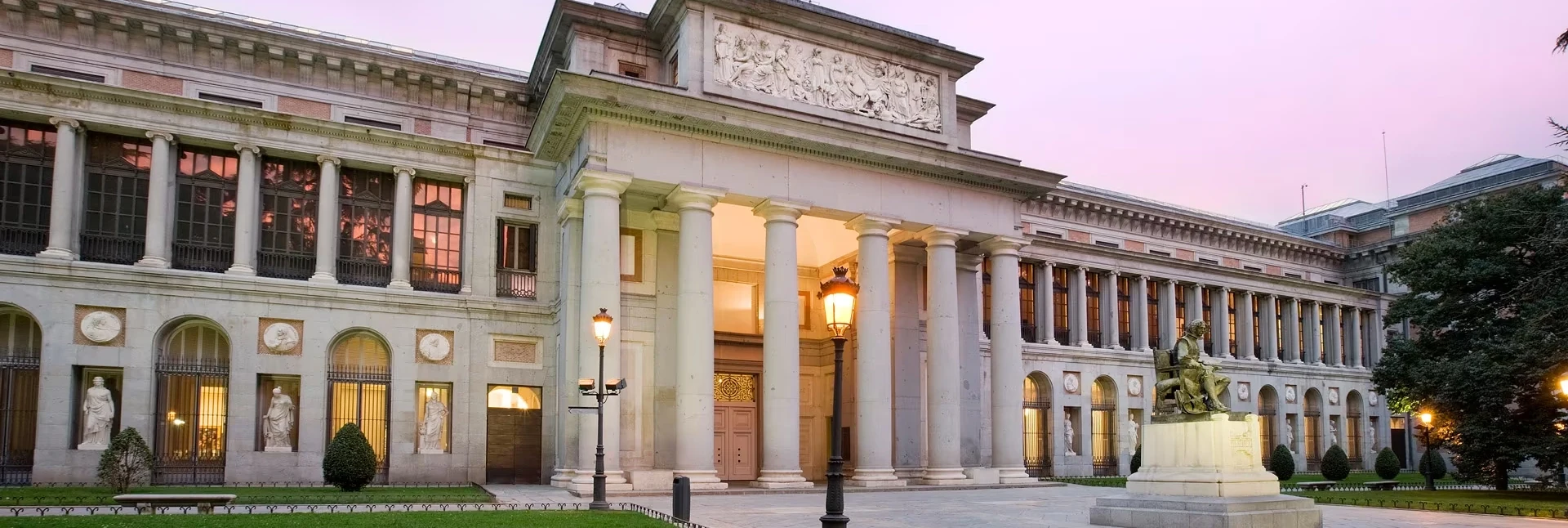
History of the Prado Museum in Madrid: The Heart of Spanish Art
The Prado Museum is much more than one of the world's most important art galleries; it is a living testament to Spanish history, culture, and art. Located in the heart of Madrid, this iconic museum is a must-visit destination for art and history lovers.
Discover how it was founded, the treasures it holds, and how it has evolved over the centuries.
The Foundation of the Prado National Museum
The Prado Museum was inaugurated on November 19, 1819, at the initiative of King Ferdinand VII, who, together with his wife, Queen María Isabel de Braganza, decided to transform the building into a space to showcase the royal collections. Originally designed by architect Juan de Villanueva as a Natural Sciences Cabinet, the building was eventually dedicated to housing the most valuable artworks of the Spanish monarchy.
With only 311 paintings on display at its opening, the museum was conceived as a window into the talent of Spanish artists, featuring names like Velázquez, Goya, and Murillo at the core of its initial collection. Since then, the Prado has grown exponentially, establishing itself as a global reference for classical art.
Main Collections of the Prado National Museum, general museum access
The Prado Museum houses over 8,000 paintings, 7,000 drawings, 4,800 prints, and 1,000 sculptures, although only a fraction is on display. Here are some of its most notable collections:
1. Spanish Painting: The Prado is especially renowned for its collection of Spanish art, including masterpieces like Velázquez's Las Meninas, Goya's La Maja Desnuda, and Murillo's The Dream of Jacob. These works not only showcase the artists' talent but also reflect the social and cultural changes of their times.
2. Flemish and Dutch Painting: The influence of Northern European artists is also evident in the Prado's collection, with works like The Garden of Earthly Delights by Bosch and The Descent from the Cross by Van der Weyden.
3. Italian Painting: The Italian Renaissance also holds a prominent place, with works by Titian, Raphael, and Tintoretto standing out for their sophistication and beauty.
4. Sculpture and Decorative Arts: Although the Prado is mainly known for its paintings, it also boasts a remarkable collection of sculptures and decorative objects that enrich visitors' experiences.
The Evolution of the Prado Museum
Since its foundation, the Prado Museum has undergone various expansions and renovations to accommodate its growing collection and increasing visitors. One of the most significant was the 2007 expansion, designed by architect Rafael Moneo, which incorporated the Cloister of the Jerónimos and created new spaces for temporary exhibitions.
The museum has also adapted to the digital age, offering virtual tours, audio guides, and an online database that allows users to explore its collection from anywhere in the world.
Why Visit the Prado Museum: Official Tickets
Visiting the Prado Museum is a unique experience that combines art, history, and culture. Whether you purchase your Prado National Museum tickets to enjoy its permanent collections or explore its temporary exhibitions, each visit is an opportunity to connect with the artistic legacy of Spain and Europe.
If you're planning your visit, consider joining a guided tour to make the most of your time and learn fascinating details about the artworks. With options like group, private, and themed tours, there is an experience for every type of visitor.
The Prado Museum Official Tickets
Today, the Prado Museum is one of the most visited tourist attractions in Madrid and an emblem of the city. From its humble beginnings as a space for Spanish art to its current status as a world-renowned cultural institution, the Prado remains the heart of Spanish art and a meeting point for art lovers from around the globe.
Get your tickets, plan your visit, and discover everything this magnificent museum has to offer!